There is probably no person, especially a dog lover, who is not familiar with the term ‘ear cropping’. You can see cropped ears in dog breeds such as Schnauzers, Boxers, Pit Bulls, Doberman Pinschers, and Great Danes. Today, we will focus on Great Dane ear cropping.
Opinions on this topic are numerous and divided. While some consider this procedure completely unnecessary and extremely painful for dogs, others still see certain benefits of this surgical procedure.
In order to get an objective view of this topic, we will first elaborate on the origin of this procedure in Great Danes and in other dogs. Afterward, we will see if there are any proven benefits of ear cropping in this dog breed.
Also, we will analyze the known risk of this procedure in Great Dane dogs.
Well, let’s find out what exactly is hidden behind this controversial topic.
Is Great Dane Ear Cropping Advisable?
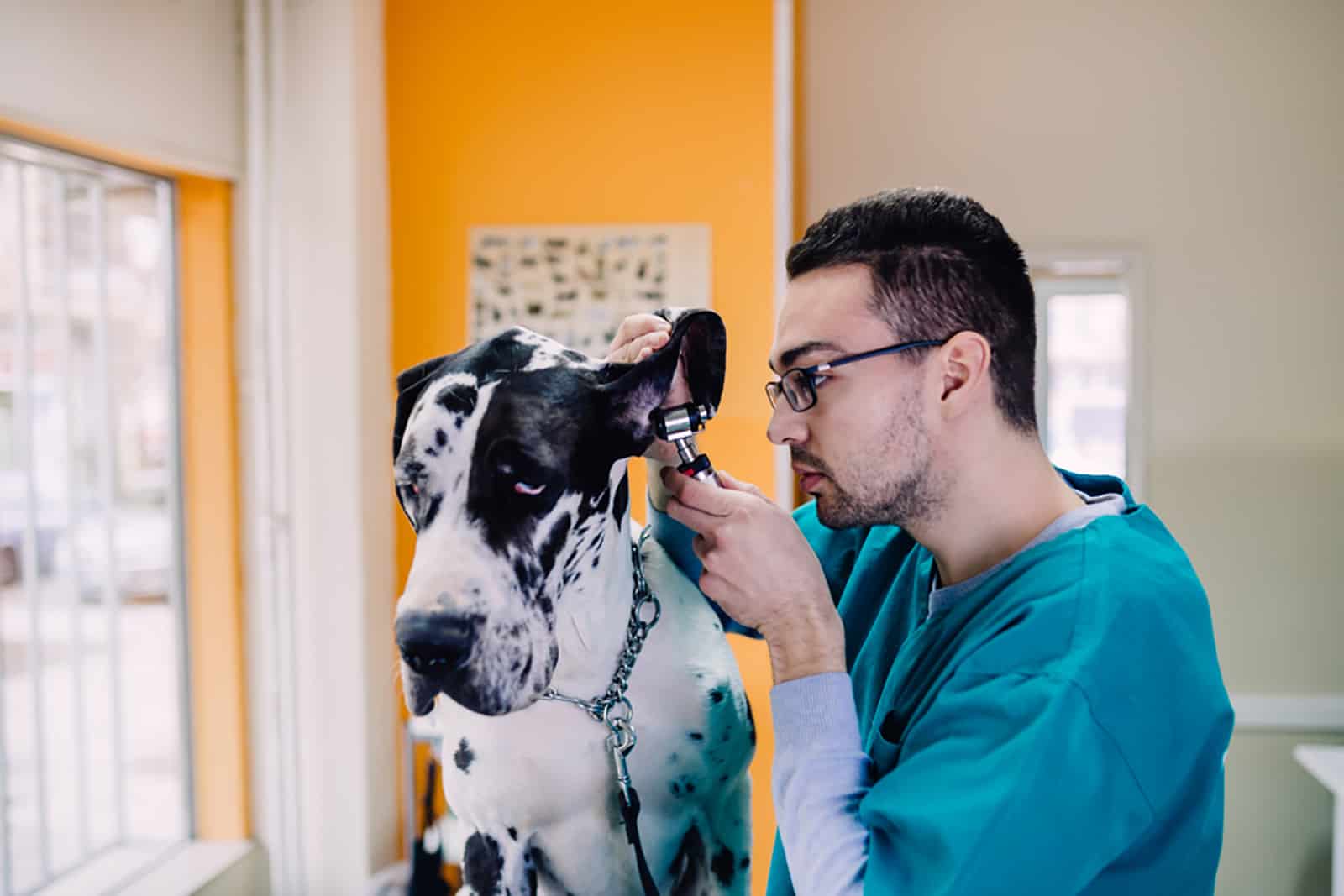
Great Danes naturally have floppy ears. If you decide to crop them, their ears will be standing straight.
Many dogs have their ears cropped because they participate in dog shows, and this feature makes them look more elegant and alert.
In the past, when Great Danes were exclusively hunting dogs, their ears were cropped so they could not get hurt while they were hunting wild boar.
These animals’ tusks and sharp teeth would inflict severe injuries on the Great Danes, and their ears would often become injured and bleed extensively.
For this reason, it was considered better to have these dogs’ ears cropped.
However, these dogs today are family dogs, so we must wonder: is it really necessary to proceed with this practice?
Ear cropping has been present in dogs for many years now. In the past, people did not have the appropriate equipment, medicines, or even knowledge that our veterinarians have today.
Therefore, ear cropping was one of the ways that they believed would prevent ear infections in dogs.
Ears were mostly cropped on hunting dogs, or on watchdogs, such as the Great Dane. What are the main characteristics of this big dog?
A Word On The Great Dane Dog Breed
According to the Great Dane growth chart, this dog usually stands between 28 and 32 inches tall, and its weight ranges from 110 to 175 pounds.
This dog is extremely protective, loves its people, and is very attached to them. One drawback of this magnificent dog breed is its short lifespan, which is generally estimated at 8 to 10 years.
Their short lifespan is one more reason to take good care of our Great Dane dogs. This means regular vet checkups, enough exercise, and proper nutrition.
An excellent guide for a proper diet is the Great Dane feeding chart. Also, quality dog food is a must with this large dog.
Now that we know what kind of dog it is, it’s time to find the answer to the question of whether ear cropping is advisable in Great Danes. Our answer would be – no!
Is Ear Cropping Necessary With Great Danes?
In the world of modern medicine and available drugs, and in the age of great specialists, we believe that ear cropping in dogs today is performed exclusively for aesthetic purposes.
What kind of aesthetic needs are we talking about? Well, according to some opinions, cropped ears give a dog a more aggressive and dangerous appearance.
But, even though most people will say that cropping a dog’s ears is unnecessary and even cruel, the world is still not aligned with this viewpoint. In some countries, ear cropping is prohibited by law, while in others, it is still allowed.
Unfortunately, even in areas where such a procedure should not be performed, there are still people who do it illegally.
What About Tail Docking?
An additional procedure that was present in some dogs, including Great Danes, is tail docking.
Individuals believed that a docked tail would render better spine posture and faster running in dogs. Rottweilers are one of the most famous dog breeds associated with tail docking.
Tail docking is done with a scalpel or surgical scissors. This procedure is performed on puppies that are very small – when they are only 10 to 14 days old. This procedure is cruel, and should not be part of the practice in any dog breed.
At What Age Do You Crop A Great Dane’s Ears?
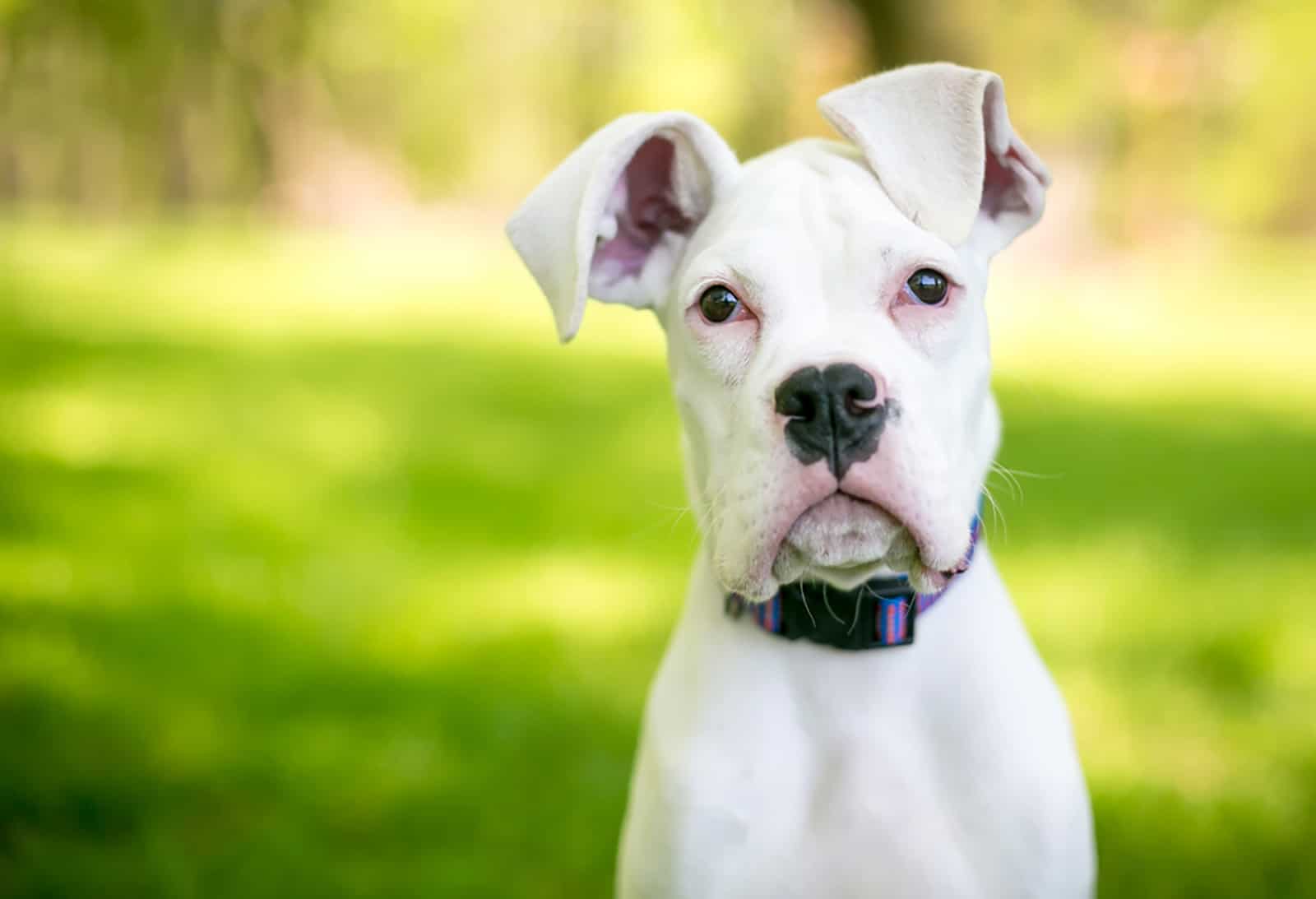
Great Dane ear cropping refers to a surgical procedure in which part of the cartilage and soft tissue of the ear is cut.
The procedure is performed under anesthesia. After the operation, the dog’s ears are fixed with a bandage so that they stand upright.
Ear cropping is done while the Great Dane is still a small puppy – usually, when he is between six and 12 weeks of age.
In some cases, dogs can be up to one year old, which increases the risk of complications, and brings trauma and psychological consequences to the dog.
Some veterinarians will refuse to crop a Great Dane’s ears if the puppy is older than five months.
How Long Does Ear Cropping Take?

The procedure of Great Dane ear cropping usually lasts from 45 minutes to one hour and 30 minutes. This time includes preparing the dog for surgery and putting the dog under anesthesia.
The operation includes removing the outer half (or the pinna) of the dog’s ears. The incision is usually sutured, and the sutures are removed after 10 to 14 days.
Bandages are placed on the dog’s ears to keep the ears upright while the dog recovers from the procedure.
What Are The Great Dane Ear Cropping Styles?
If you decide to crop your Great Dane’s ears, the vet will ask you what shape of ears you would like your dog to have. The two most popular cropping styles for Great Danes are as follows:
Medium crop (pet crop): The medium crop (or the pet crop) is the hardest one to get, but it’s pretty easy to maintain. As the name suggests, if you choose this style, your Great Dane will have medium-sized ears.
Show crop: This style of ear cropping is best suited for Great Danes that will participate in dog shows. Dogs with ears cut like this look alert and elegant. Great Danes with a show crop have ears set high and pointed.
If you do not have a personal preference regarding the style of ear cutting, the veterinarian will decide for himself how to cut the dog’s ears, which will be in accordance with the breed standard or in the way that will be best for your dog.
How Long Does It Take To Heal After Cropping?
In most cases, the dog goes home the same day the surgery is done. The vet will tape the puppy’s ears up so they will be standing straight.
With most dogs, the healing process after surgery will last from four to six weeks.
During this period, your dog may need pain medication, and you will need to monitor the healing of the wound and the general behavior of your Great Dane.
It will be necessary to take the dog for an examination every two to seven days. As the wound heals, your dog might have problems with itchy scabs. You should make sure that the dog does not scratch or touch the wounds.
Your Great Dane will require adequate aftercare after this procedure.
If the dog continues to scratch, it would be best to buy him a collar that will cover the top of his head and prevent him from scratching. In this way, the wounds will heal better.
Most of your Great Dane’s healing process is your responsibility. Monitor the wound healing, clean wounds as directed by your veterinarian, and make sure the bandages are on your dog’s ears for at least 21 days after surgery.
If you notice any sign of infection or severe pain in your dog, contact your vet right away.
How Much Does It Cost To Crop A Great Dane’s Ears?
On average, you will need to pay about $500 to have your Great Dane’s ears cropped by a veterinarian. However, this price can also vary, so you may find this procedure to cost less – around $200, or more – about $800.
The only thing you definitely need to know is that the person who should perform this procedure on your dog must be a trustworthy person.
Under no circumstances should you allow such a procedure to be performed by an unprofessional person. After all, ear cropping is a surgical procedure that involves anesthesia and appropriate recovery.
What Are The Risks Of Ear Cropping?
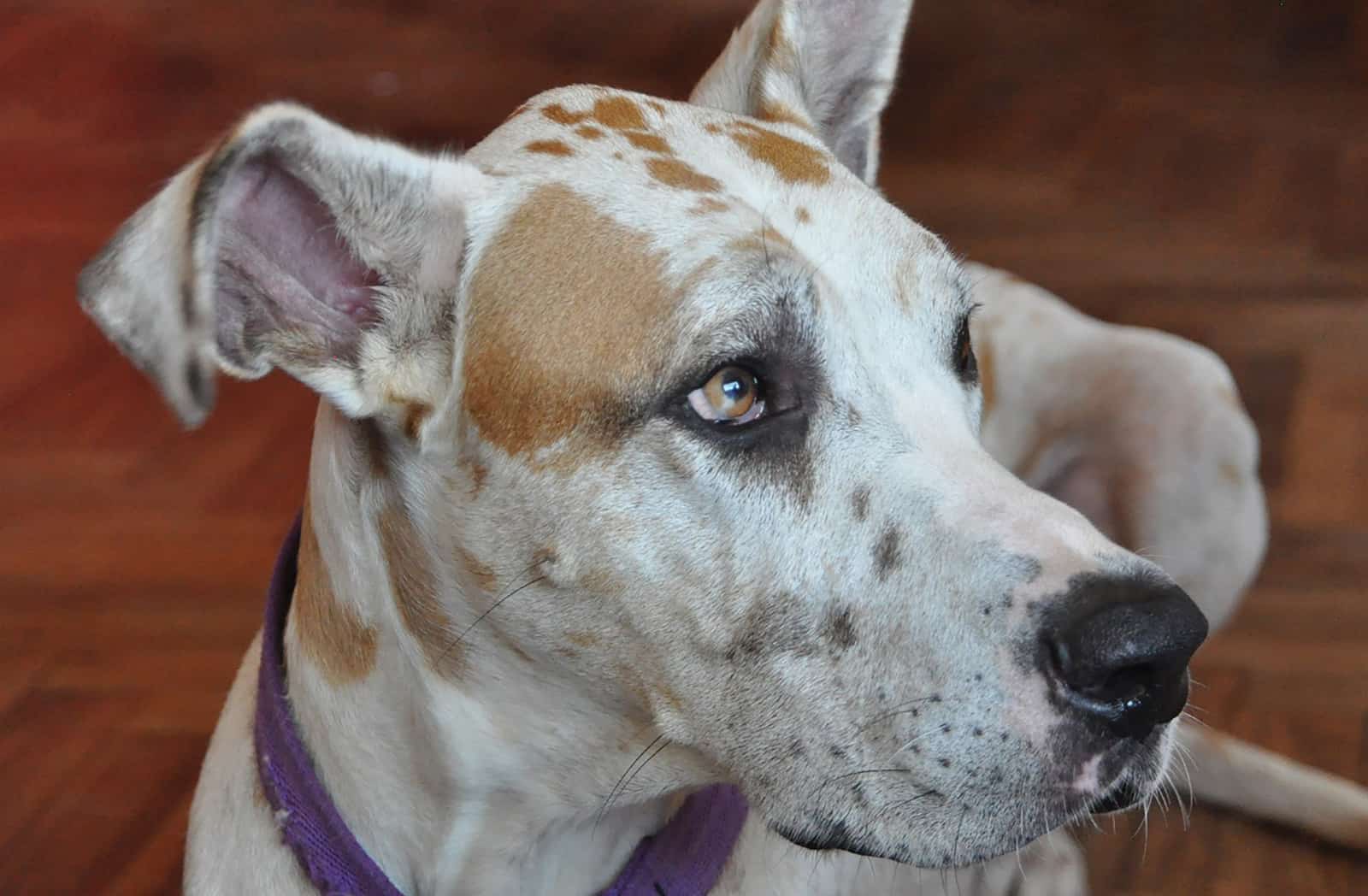
Every surgery always carries a certain potential risk. Cutting a dog’s ears is no exception. However, this does not necessarily mean that your dog will suffer any consequences.
As we have already mentioned, we believe that it is completely unnecessary for Great Dane owners to subject their dogs to this procedure, especially if it is done solely for aesthetic reasons.
With this in mind, let’s take a look at the risks of cropping your Great Dane’s ears.
1. The Dog Will Suffer Unnecessary Pain
The dog is the most popular pet, and a large number of people enjoy sharing life’s moments with this favorite animal.
Through years of association with this animal, we have seen that it feels various emotions, among which are fear and pain.
Even if the cropping procedure is done by a vet, under anesthesia, this does not mean that your dog will be pain free. Every wound needs time to heal, and this will be the case with your dog’s ears as well.
Of course, a dog cannot make a decision about any surgical procedure on its own.
In such cases, dog owners are the voice of reason. Our question is why would anyone, for no good reason, subject their furry friend to any pain? Don’t forget that you are fully responsible for your dog’s well-being.
Also, bear in mind that putting a dog in any kind of pain is considered animal cruelty.
2. The Dog Under General Anesthesia
Any operation under general anesthesia is considered risky. Of course, science has advanced considerably today, and we don’t want to scare you that something bad will happen to your pet during surgery.
However, it is good to know certain risks of anesthesia for a dog.
After being anesthetized, the dog may develop mild symptoms, such as vomiting or puppy diarrhea. In some severe cases, strokes have also been recorded.
Let’s note again that these are extremely rare situations, and that in most cases, everything goes without major complications.
Any reliable veterinarian will consider the dog’s characteristics, such as the dog’s breed, age, and size before putting the dog under anesthesia.
Every dog will react differently to anesthesia. Your task here is to properly inform your veterinarian about the medications your dog is taking, if any, and to instruct him if your dog has certain allergies or suffers from an autoimmune disease.
3. Post-procedure Complications
Some of the postoperative complications that can occur after the cropping process include bleeding and wound infection.
After you take your dog home, it is necessary to monitor his behavior. In most cases, the recovery will go well. However, you should contact your vet immediately if you notice some of the following symptoms in your dog:
• Diarrhea
• Vomiting
• Excessive scratching
• Dog refusing to eat
• Dog seems to be in a lot of pain
4. The Puppy Will Be Left With Trauma
Ears are very important for every dog. Not only are they used for hearing, but we can learn a lot by observing our dog’s ears. In fact, today, we have a dog ear position chart that can tell us a lot about our pet’s emotions.
For example, if you see your Great Dane with droopy ears, the dog is probably satisfied and feels completely comfortable.
If his ears are pointed, the dog could be excited or even scared. If his ears change position, something is confusing your furry friend!
Performing an operation such as ear cropping can leave trauma and long-lasting consequences on a dog.
Although some claim that dogs won’t even remember it, and that’s why ear cropping is done when dogs are very small, we believe that dogs don’t forget great pain and recover so easily.
If you notice that your dog is restless during the night months after the procedure, it is very possible that these are the consequences of the trauma he has experienced.
What Are The Benefits Of Cropping A Great Danes Ears?
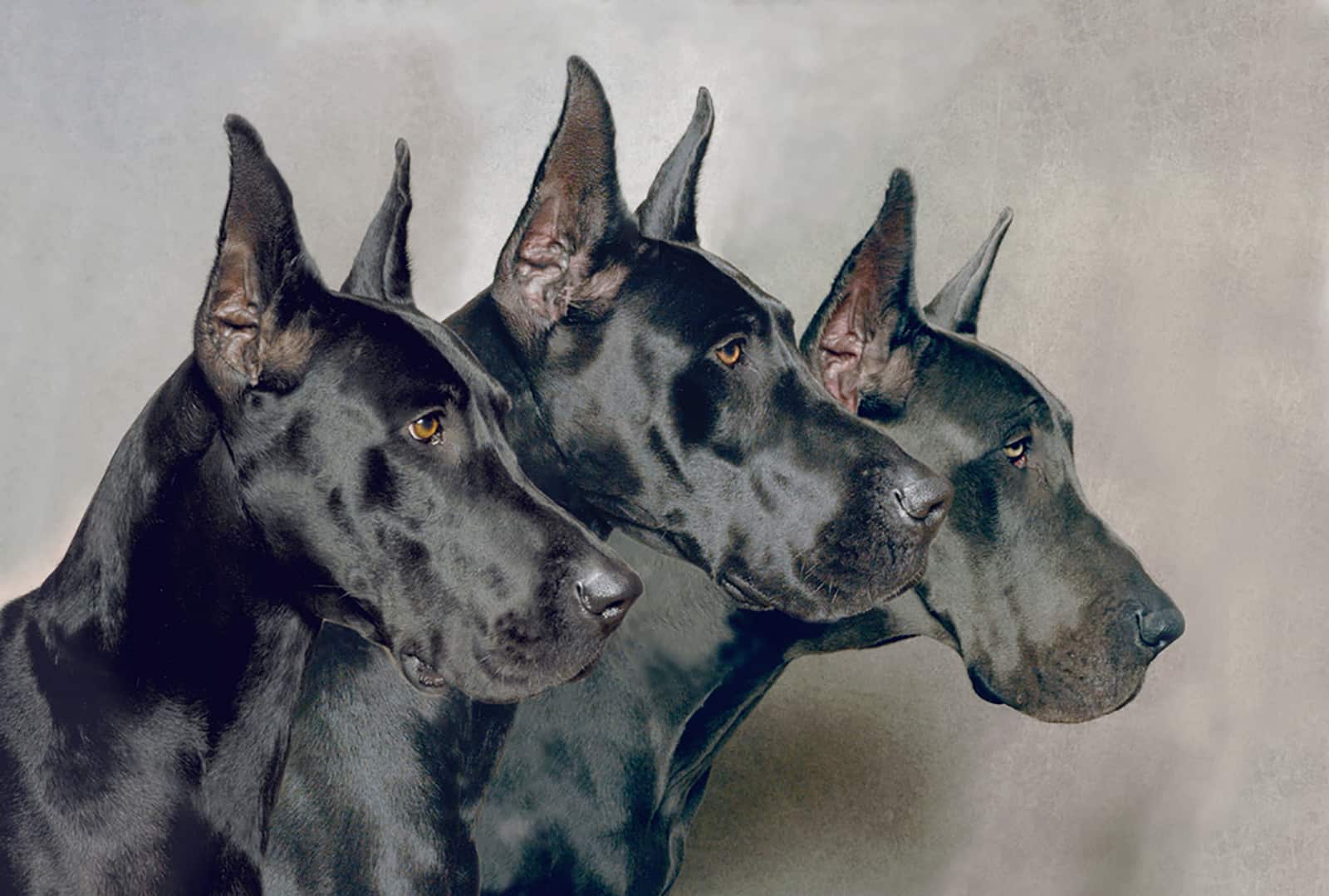
According to the American Kennel Club, ear cropping and tail docking are procedures that are part of the breed standard for some dogs, and they are acceptable as long as they are undertaken in order to save the dog’s health or to define the character of a certain breed.
On the other hand, the American Veterinary Medical Association does not approve of ear cropping in dogs in cases where this procedure is done only for cosmetic reasons.
The process of ear shortening has been present for many years in many breeds, including Great Danes. As we have already stated, there are certain risks of performing this procedure.
But, what about the benefits? Are there actually any good sides to performing this kind of surgery on dogs?
1. Ear Cropping Prevents Ear Infections
This is one of the most common reasons given by people who consider ear shortening a necessary and desirable procedure.
Many dogs have problems with ear infections. For this reason, it is necessary to clean the dog’s ears regularly. Also, you can learn a lot of useful things from this dog earwax color chart.
If you notice a change in the color of the wax in your dog’s ear, it is possible that it is a certain health problem, and it is best to immediately seek the help of a veterinarian.
But, back to the link between the frequency of ear infections and ear cutting in dogs.
It is true that certain ear infections are associated with droopy ears in dogs. Some dog fanciers believe that dirt gets in the ear canal easier with dogs that have not had their ears cropped.
However, there is not enough research and evidence to say in general that ear cropping reduces ear infections, or that this procedure will be equally beneficial for every dog.
Therefore, this benefit often appears as the first and most important benefit of ear cropping in dogs, but we still cannot consider it fully confirmed and adopted.
2. A Dog With Cropped Ears Will Look More Alert
Anyone looking for a big guard dog will first do a good job of researching the specific dog breed.
Size, bad looks, and even fur color are some of the factors people consider here.
According to some opinions, a Great Dane’s cropped ears will make this dog look more dangerous, and thus, better for the task of being a guard dog.
It is true that cropped ears really enhance the impression of a dog ready to defend its territory and its family.
It is only necessary that every dog owner asks himself whether this is worth exposing the dog to this cosmetic surgery and recovering from it.
How Does Ear Cropping Affect The Dog’s Hearing?
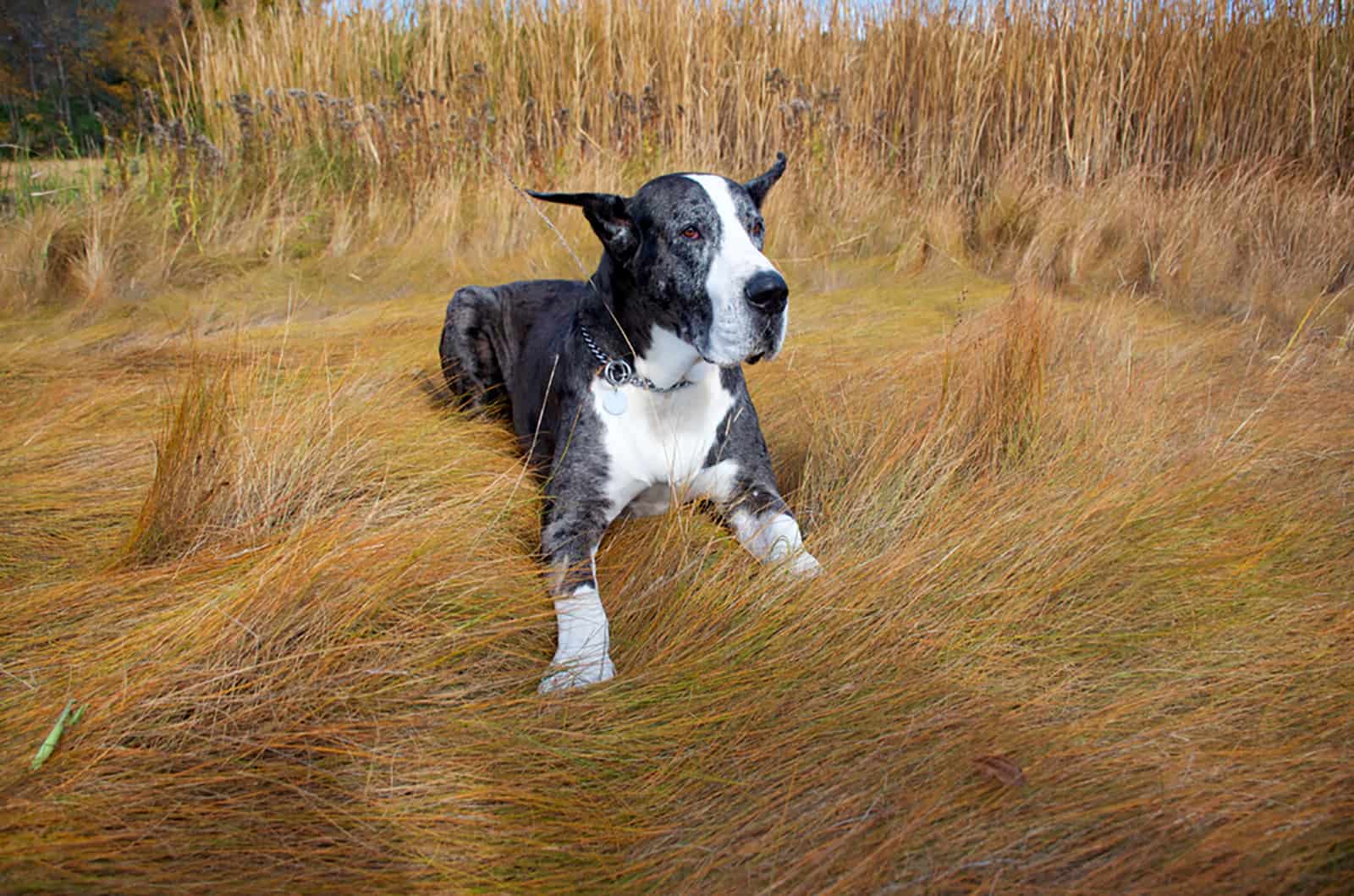
As we have already mentioned, ear cropping was performed much more often in the past than it is today.
The procedure was performed to protect the dogs from ear infections or to prevent their ears from being injured during encounters with wild animals while hunting.
Another additional reason is because ear cropping was believed to improve a dog’s hearing.
Does ear cropping affect hearing in Great Danes?
Similar to ear infections, there is no proven evidence that a dog with cropped ears has better hearing than a dog with natural ears.
So, ear cropping does not guarantee that your dog will hear better, and therefore, be a better guard dog or a better hunting dog.
Conclusion
Great Dane ear cropping is not an easy topic to cover. It is necessary to be objective and look at this problem from several different aspects.
Historically, these dogs were mostly hunting dogs, and it was believed that cropping their ears was helpful in trying to prevent their ears from getting hurt while hunting.
Also, this procedure was thought to reduce the occurrence of ear infections, and even have an effect on hearing in dogs.
However, if your dog is sensitive to anesthesia or suffering from a certain allergy, then this kind of treatment is not recommended at all, especially since your Great Dane doesn’t really need it at all! Well, at least not for health.
It is true that most people cut their dog’s ears for aesthetic reasons. Cropped ears will make the dog look more dangerous and intimidating. But, does this actually make him better at fulfilling his tasks?
Our answer would be ‘no’. It is true that cutting ears today is a simple procedure that takes a relatively short time, and it is completely safe in the majority of cases. So, we don’t want to scare you that something bad will happen to your dog.
This decision is completely individual, and each Great Dane owner will make it based on personal preferences. Our judgment would be that ear cropping is unnecessary, and we cannot find a valid reason to justify carrying out such a procedure.
We think that the fact that ear cropping is illegal in some states speaks for itself. Regardless, whatever decision you make, we wish you many beautiful moments spent with your Great Dane, who, regardless of whether his ears are cropped or not, is a wonderful watchdog and protector!
Related Content:
• Doberman With Uncropped Ears: The Truth About Ear Cropping
• Cane Corso Ear Cropping – To Cut Or Not To Cut?
• Top 10 Great Dane Breeders – Where To Find Great Dane Puppies For Sale













